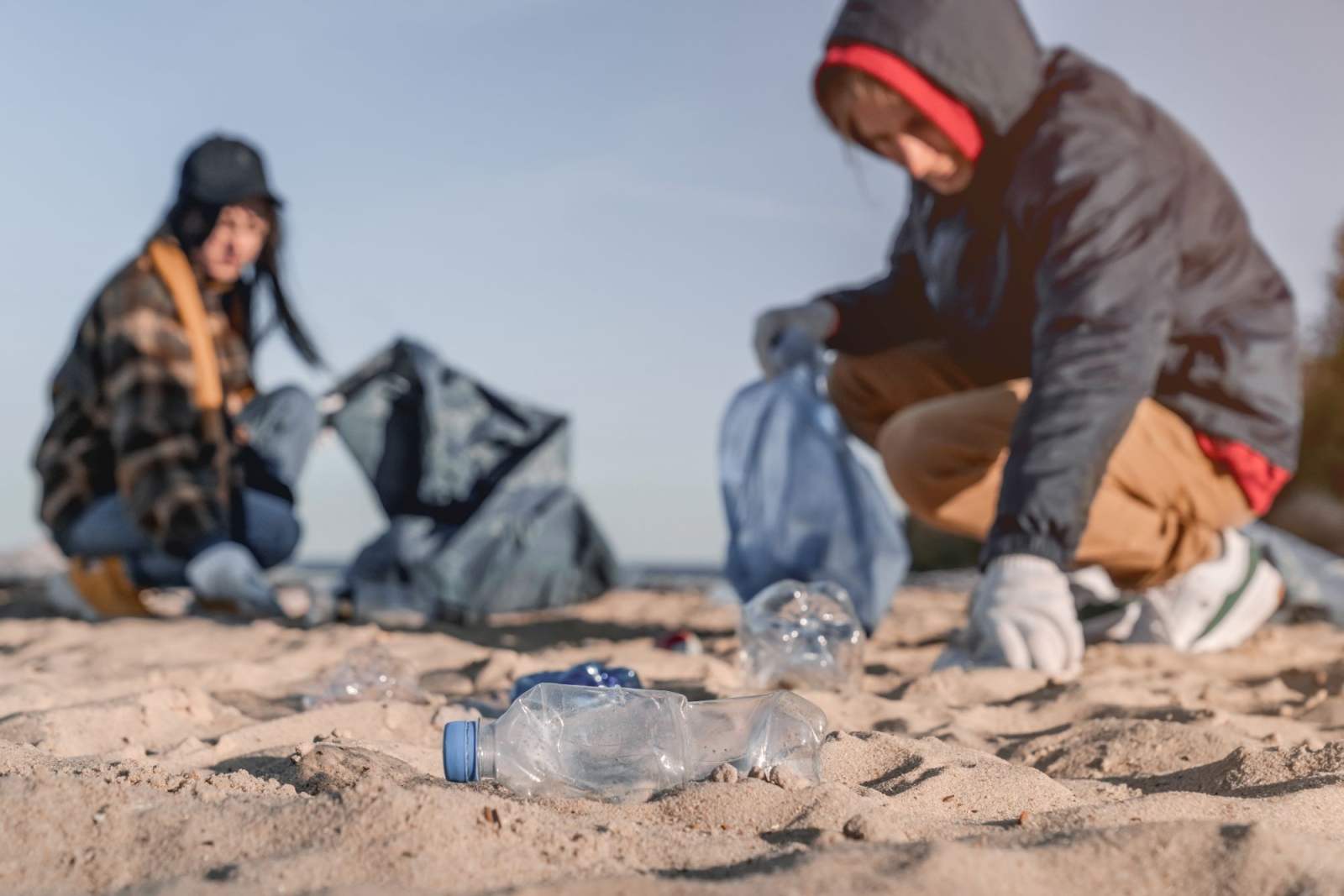The zero draft of the Global Plastic Treaty released in early September offers a wide range of options, some of which have the potential to result in an effective legally binding instrument to combat plastic pollution. However, although member states are calling for treaty negotiations to be based on the best available science, there are currently obstacles to independent scientific representation.
The Scientists' Coalition for an Effective Plastics Treaty, a group of 300 independent scientists with expertise in plastic pollution, has developed a response to the zero draft with their comments and reflections. The zero draft will serve as the basis for the third round of intergovernmental negotiations (INC-3) to be held in Nairobi Nov. 13-19. The Scientists' Coalition made its response public on the afternoon of November 3 and will circulate it with national delegation points of contact in order to support them in the negotiations. Renewable Matter received a preview of this text, which it was able to explore further by interviewing two contributing scientists, Trisia Farrelly and Susanne M. Brander.
Key requirements for an effective treaty
The zero draft text is divided into six parts and seven annexes. Each section has been commented on by members of the Scientists' Coalition who, as is the case in the IPCC (Intergovernmental Panel on Climate Change) in climate negotiations, are divided into Working Groups (WGs) based on the specific expertise of the various scientists. WG1. Upstream measures and impacts; W2. Circular Economy; WG3. Polymers, chemicals and products of concern; WG4. Waste management and existing plastics pollution; WG5. Indigenous and Traditional knowledge; WG6. WTO dialogue on plastic pollution (DPP); WG7. Food System Plastics.
For those elements of the treaty on which there has already been discussion among member country delegations during INC-1 and INC-2, there are two or three options in the zero draft, generally representing progressively decreasing levels of ambition. “Our general endorsement lies with ‘Option 1’ as the starting point for negotiations for most provisions, given their higher ambition and better suitability to achieve the mandate of resolution [of the United Nations Environment Assembly, ed.] 5/14 to achieve sustainable production and consumption of plastics. These provisions must be grounded in the zero waste hierarchy, and embody the principles of prevention, precaution, polluter-pays, and non-regression” reads the Scientists' Coalition response.
Scientists say there are five key requirements that the future Global Plastics Treaty must have. Time-bound, legally binding primary polymer reduction targets for each Party to ensure the attainment of a global aggregate reduction target. Safety, sustainability, essentiality, and transparency criteria for all materials. Initiation of sector-specific strategies and work programs. A dedicated multilateral fund, plastic pollution fees and mandatory Extended Producer Responsibility. An independent, trusted science-policy interface including expert committees under the Governing Body of the instrument.
An independent scientific policy interface
"The zero draft provides a wide range of options on the elements with flexibility to strengthen and combine options. Some of those options have the potential to result in an ambitious, comprehensive, and effective legally binding instrument. It is an excellent starting point for negotiations" Trisia Farrelly, Professor of environmental anthropology at Massey University, Aotearoa New Zealand, steering committee member of the Scientists' Coalition and leader of WG6. WTO Dialogue on Plastic Pollution, told Renewable Matter.
Regarding what should be included in the zero draft and in the treaty to make sure that decisions are made based on scientific information, Farrelly, who has been involved in the global plastics treaty negotiations since 2018 as a member of the United Nations Environment Programme’s Expert Group and then Scientific Advisory Committee (Marine Litter and Microplastics), responds: "The treaty needs to include an independent science policy interface (SPI) and a range of specialist sub-committees under the governing body of the instrument with the mandate to develop, review, and update assessment criteria, targets, guidelines, protocols and procedures for monitoring and reporting, and subsequent lists in the treaty annex. This body should include socio-economic, indigenous, and local expertise".
Getting more specific: “We recommend safety, sustainability, essentiality, and transparency criteria for bio- and fossil-based feedstocks, chemicals, polymers, alternatives, substitutes, products, technologies, and systems/services (assessed in groupings and taking a hazard-based approach). Plastics alternatives and substitutes should undergo the same assessment as conventional plastics and assessment criteria should be developed to determine annex listings of prohibited, restricted, and permitted groupings” Trisia Farrelly explains further to Renewable Matter. The researcher also adds the importance of having a specific mention of waste pickers in the final draft of the treaty.
Reducing the number of chemical compounds
One important aspect that scientists say must be included in the treaty is the simplification of chemicals in order to reduce the negative impacts they have on humans and other living organisms. "Thousands of chemicals are used in the production of plastics, and the vast majority of these are not regulated globally " Susanne M. Brander, Associate Professor in Ecotoxicology at Oregon State University and co-leader of the WG3. Working Group, Chemicals, Polymers, and Problematic and Hazardous Products, tells Renewable Matter.
“They are used as additives, fillers, and dyes, some are non-intentionally added, and they complicate advancement towards circularity because as plastics are recycled or repurposed these chemical mixtures are combined and become more complex and potentially more hazardous. Many of the chemicals used in plastics are endocrine-active, meaning that they disrupt or interfere with hormone signaling and this can lead to disease-states.”
“Polymers such as PVC are also of particular concern, as well as others yet to be specified either due to their inherent toxicity or due to dangers incurred during production and shipping (e.g. chemical spills affecting the livelihood of citizens), or their inability to be recycled. As such these polymers are also recommended for potential bans or limited use. In summary, our working group supports the elimination or restricted use of agreed-upon chemicals and polymers, and believes that the treaty should support the development of criteria that allow the identification of hazardous polymers as well as chemicals” continues the researcher.
The ecodesign of plastic products
Another important point is the design of plastic products, which is crucial if a circular plastic economy is to be developed. " Finally, plastic products must be more sustainably designed. This includes bio-based and fossil fuel-based plastics and those that contain recycled polymers. Chemical simplification (reduction in the number of chemicals used) is key. For these reasons our group is recommending the development of criteria for and the use of prohibited, restricted, and permitted lists going forward, which should be applied to chemicals and polymers currently in use as well those that are newly proposed” specifies to Renewable Matter Susanne M. Brander.
Brander goes on to explain that "Only a very small percentage of chemicals used in plastics are regulated, and this is mostly limited to countries located in the global North. A binding treaty is essential to move necessary regulation and sustainable design forward."
Scientists' participation in negotiations useful but hampered
Since the start of negotiations for the Global Plastic Treaty, there have been a growing number of postings, statements, and interventions from member states calling for the use of the best available science to support the treaty negotiations. For example, during INC-1 and INC-2, some delegates expressed confusion over the terms "plastic pollution" and "full life cycle" and requested guidance from the Scientists' Coalition before INC-3.
In response to these requests, the Scientists' Coalition drafted the document “Definitions relevant to the scope of the plastics instruments”, which explains what the two concepts mean from a scientific perspective. For example, Trisia Farrelly tells Renewable Matter, " We want the treaty text to be clear that 'full life cycle' of plastics begins at the feedstock sourcing stage through to the removal of plastics from the environment and the remediation of contaminated ecosystems”.
The document, as well as other policy briefs drafted by the Scientists' Coalition (Plastics Alternatives and Substitutes; Plastics Removal Technologies; Bioplastics, biobased plastics and plastics with biodegradable properties; A global Plastics Treaty Guided by Indigenous Pacific Wisdom; Waste Management; etc.) is available on the Scientists' Coalition website.
"Despite this resounding call, there is still no formalised process by which the Scientists’ Coalition and other independent scientists and scientific organisations and institutes have been encouraged or supported to engage directly and effectively with member states. In addition, many scientists have struggled to obtain accreditation through their academic institutes to attend the INCs at all" Farrelly explained to Renewable Matter. A problem that had already been denounced by the scientific community dealing with plastic pollution last June in a letter published in the scientific journal Science.
A binding global treaty before it's too late
"I am thrilled to see this moving forward" Susanne M. Brander concludes. "I don’t see efforts at regulation at the individual country level moving quickly enough to allow for the systemic change that is needed in the plastics industry, by uniting efforts globally via a binding treaty we stand a far better chance of truly reducing plastic production and its numerous negative impacts before it is too late to change course."
This article is also available in Italian / Questo articolo è disponibile anche in italiano
Cover image: Envato



